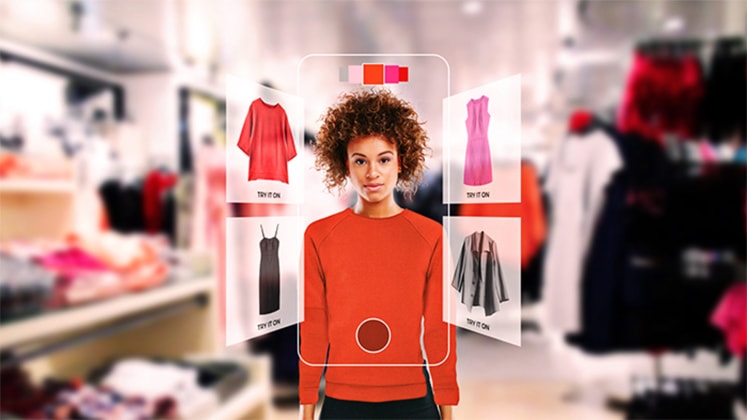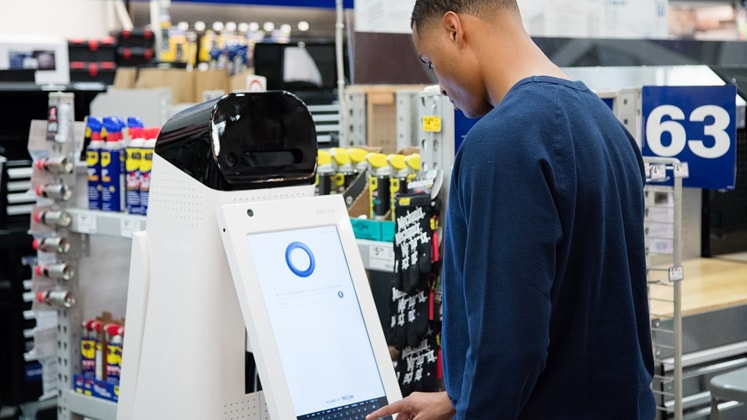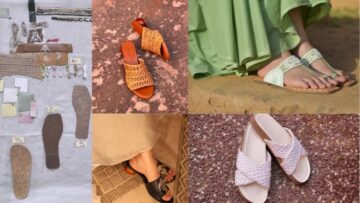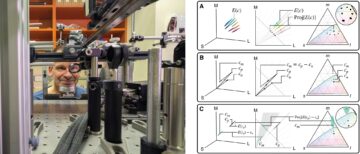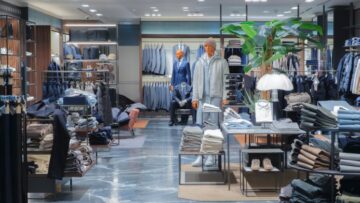
Emerging technologies like AI, AR, VR, blockchain have all contributed to remodel the retail industry, with enhanced features and functions transforming the experience for the shoppers and retailers. Yet many of these technologies are still to see wide adoption. Let’s have a recap of technologies that brought innovation to the retailers last year and how they will further enhance the retail experience.
Whether it’s online or offline, technology has been revolutionising the retail functions everywhere. Exciting in-store experiences combating online shopping challenges, personalised shopping experience and better data-driven decisions are some of the benefits that the retailers have been able to deliver with the help of these technologies. Let’s have a look at these inventions.
AI-based personalised shopping experience and customer-centric merchandising
Undoubtedly artificial intelligence (AI) has taken over the industries, be it in automotive, food or apparel; every industry has adopted the technology for better reasons. These can handle multiple tasks assigned to human beings, all at once.
According to a report by MARKETSANDMARKETS, the global AI in fashion, the market size is expected to grow from US $ 228 million in 2019 to US $ 1,260 million by 2024, at a compound annual growth rate (CAGR) of 40 per cent during the forecast period. The main growth factors are personalised experience, the growing influence of social media and the need for better inventory management systems. Moreover, forecasting future trends, identifying customer buying behaviour and fast fashion are also key factors contributing to the growth of AI adoption.
Every customer loves personalised shopping experience having a personal connection with the brands. Retailers earlier used to do this through human behaviour and staff management; however, today this can all be done through technology and in a better way. Data crunching and analyses are now important for the retailers; AI is helping to derive better results and predicting what can be the best suitable outcome for this.
The technology in the apparel industry has found its application in recommending the best possible outfit suggestions for the customers along with the full look to the customers helping them with their shopping decisions. One best case is North Face that uses AI which acts as both a personal shopper and knowledgeable sales associate for the online consumers. The software asks a few questions to the retailers and then recommends the best suitable jacket options it has.
Another application of the technology is helping the retailers understand the demand of the customers through the software. These are helping the retailers target the right customers, with the right product and the right pricing at the right time. The best example is M&S that is using the technology to understand the demand of their customers, buying more of what their customers like and eliminating what they don’t need.
First Insight is one of the technology suppliers for the same, helping the retailers with customer-centric merchandising through machine learning-driven product selection that help brands make accurate product selection decisions, AI-driven pricing decisions, determining the right amount of quantity needed to reduce stock-outs and over-stocks.
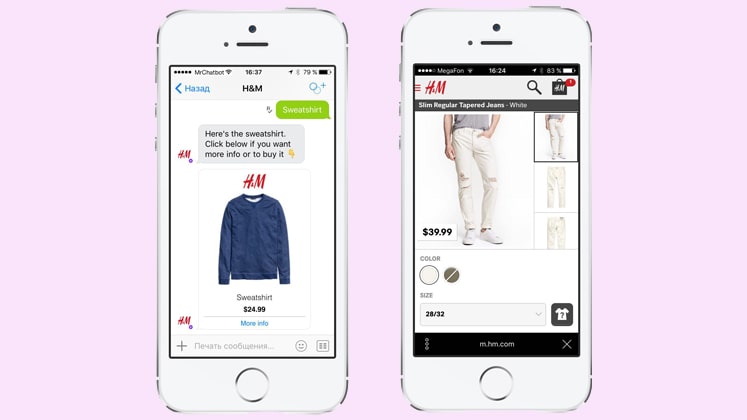
AI-based Chatbots are the new sales representatives being used by the retailers to handle customer queries and contact with customers. These are computer programs or artificial intelligence designed to convincingly simulate human conversation through messaging or chat, one of the most preferred ways of communication by Gen Z. These are trained to entertain customer queries, answer them with the right solution and information.
In some cases,when the query needs any human intervention, the case is forwarded to the human representatives for further clarification. Moreover, these chatbots are today trained with fashion AI capabilities making them capable of recommending matching outfits and styling the entire look based on the input provided by the customers, therefore, making them act like a fashion consultant. For example, H&M is leveraging the use of technology helping customers navigate their search through outfit possibilities and guiding customers through their online store areas that align with the purchase decisions. It can suggest different outfit recommendations to the customers.
Streamoid Technologies Pvt. Ltd. is also a solution provider in this field whose AI-based chatbots named Stylebots assist in product discovery, styling advice and customer support. These let customers type and ask for a particular product, eliminating the hassles of applying filters, sliders and radio buttons and checkboxes making the product discovery much easier.
Not just this, the AI can now act as a designer where the software can tell which designs will be the top sellers. The technology analyses sales data from different sources and provides output bifurcated into different attributes like sleeves, cuts, colours, etc., recommending the bestseller of the season helping in designing of the garments for the next season. The best example is Myntra, whose two brands Here and Now and Moda Rapido are made from total machine-generated designs. The Rapid team developed software that gave output in the form of designs by crunching the sales data from a different e-commerce platform. The brands are doing good, contributing to 12.5 per cent of Myntra’s private brand sales.
Augmented reality–based virtual trial rooms (online and offline)
The challenge for e-commerce was real that is to provide an offline kind of experience where the customers could get the actual look of the garment. The problem for the brand increased with high return rates due to the sizing issues. While offline, the ease and comfort of online shopping with huge deals created a tough competition for them. Standing in the long queue of trial rooms and checkout counters were among a few challenges to be tackled. Augmented Reality (AR) came up with a solution that has encountered the problem for both.
Virtual trial rooms in the offline stores are revolutionary, helping customers try clothes and look for options without having to enter the trial room and thus saving them from the long queue of trial rooms. These virtual trial rooms equipped with smart mirrors are allowing customers to try clothes on their virtual avatars and recommend different outfit ideas for them. These allow the retailers to display more variety of options and colours too.
Van Heusen, for example, recently opened a digitally immersive flagship store Van Heusen Style Studio in Bangalore, India. The store is equipped with a digital display that aims to solve the fit, size, style issues for the customers. The mirror can recommend them styling tips and update them on fashion trends. The fit scanner scans the shoppers using infrared rays for the measurement creating a virtual trial mirror that allows customers to try clothes without having to step into the physical trial room of the store.
For the online store, the e-commerce brands are introducing a feature that is allowing them to recreate dressing room experience, assuring customers of the size of the garment. These tools are creating a virtual avatar of the customers allowing customers to check for the drape and the fitting of the garment including the length, look, etc. A recent example is Biba, the women’s ethnicwear brand that has introduced a tool in its online platform, which allows the customers to try clothes virtually on the 3D models helping them see the size and look of the garment.
The installation has been made in collaboration with AstraFit, a USA-based provider of virtual fitting room solutions, a tool that can be installed in the online shop of the retailer, and helps the customers get the right fit dress. The technology works on ‘Fit Analysis’ algorithm, which can demonstrate the fit to the customers including a visual fit experience and an adaptive human-language description for a brief review of the product tried by the customers.
TryNDBuy based in India is another such company that is providing solutions to the retailers. The company provides a technology that allows users to try clothes and also the AI capabilities of the software act as a virtual stylist suggesting the customers about the overall look.
Blockchain: sustainability and transparency go hand in hand
Thanks to the blockchain technology which is revolutionising the way brands have been making efforts in terms of transparency and sustainability. The technology is enabling brands and retailers have full details of their products, what it is made of and where it is in the supply chain and also making the details available for their customers. Each garment is assigned a unique digital token that provides a digital history of each step taken to create that product, with important details like where the garment has been manufactured and what raw material has been used for its manufacturing, etc.
The use of technology enables brands to build greater trust in their customers, as it allows them to provide verified information about the sustainable practices that have been involved in the making of the garment. It provides information on what the garment is made of, the processes and people involved behind the product. This information is made available to the customers through just a scan. The customers can scan the QR code of the garment tags and the whole information is retrieved on their mobile screen.
Danish fashion designer Martine Jarlgaard and blockchain technology provider, Provenance, collaborated for making change through the technology. Each step in the production process was registered and tracked in the blockchain via the Provenance app and registered through all the consecutive steps in production: from spinning the yarn to knitting it into a garment. All this information could be tracked through the app which anyone interacting with the garment can have access to through QR code or NFC-enabled labels.
The technology is also the solution for getting rid of counterfeit products. Fashion products are the ones which are most prone to counterfeit, no doubt we are surrounded by duplicate products. This is becoming a huge loss for the retailers, as it affects the trust the customers have in the brand. To encounter the problem, retailers are today using technology to save the authenticity of their products. The products are encapsulated with RFID chips that carry the details of the products confirming its authenticity. On the customer side, it is the easiest as they just have to scan these tags using the smartphone that will ensure them of the brand authenticity and the price they are paying for.
Seal is a Dutch company that has also developed blockchain tech for anti-counterfeiting and theft prevention, and it provides additional services such as product analytics and monitoring distribution.
Robots as service assistance
According to a report by Mordor Intelligence, the global service robot market was valued at US $ 11.48 billion in 2018 and is expected to reach US $ 50.90 billion by 2024, at a CAGR of 25.34 per cent over the forecast period of 2019-2024. These AI Robots are all set to transform the retail industry. We now have what is called customer service robots that are designed to connect and interact with the customers and change the in-store shopping experience for them. Not just in industries like healthcare, defense, domestic, but also in defense and security, service robots are being used and the retail industry is also set to transform with their introduction.
These are humanoid and non-humanoid forms and their main value lies in labour-saving, efficiency and uptime. Most of these robots are helping customers locate products and guide them about bricks-and-mortar stores. They can interact with the customers in a more effective way than the human staff. The best of the innovation in this field is MITRA humanoid robots that are developed for better customer engagement in-store.
Encapsulated with three main technologies like face recognition, conversational abilities and automate navigation, the robots can recognise customers with face recognition, identify age, gender, dominant emotion levels. They can make conversation with the customers assisting them with a better and clearer response. They also inform the customers about a particular product with details, discounts and offers and are capable of easily navigating around the store.
Another is Cleveron, a leading click-and-collect pick-up automation, solution provider. The technology by the company helps retailers in providing an automated self-pick-up point for all the online orders. The machines can be installed inside the store, where the customers can come, scan the QR code or enter the code to receive their order that was purchased online.
The machine is capable of processing the code and delivering the desired order to the customer without any human intervention. The hassle in BOPIS (Buy Online Pickup In-Store) concept of waiting for the order to be prepared, and having to contact the staff executive, is all removed with the Cleveron machines.
Buy Online Pickup In–Store (BOPIS)
-
- commerce took over the retail industry, bringing ease and comfort of shopping from wherever thecustomerswant and the packet being delivered at their doorstep. It is like a shop in your pocket that gives you access to millions of products. However, the waiting time for the product is a constraint that the customer has to face as the product needs days to be delivered. This is not an ideal situation when a customer needs the products immediately. But, today every problem comes with a solution and so does the term BOPIS, which allows the customers to buy the product online and pick it up from their nearest store, to have immediate ownership of the product.
A report by Retail TouchPoints states that by 2021, 90 per cent of retailers will offer BOPIS, and 75 per cent will be able to identify specific customers in the store and have the ability to customise their visits. According to eMarketer, with online shopping now accounting for almost 10 per cent of total retail sales, e-commerce has a significant impact on traditional retailing and this will continue in the following years. In Q2 of 2018, almost 62 per cent of e-commerce traffic was generated by mobile itself, and in such a scenario, operating through just one channel will not solely help the retailers achieve their goal. There has to be a strong online presence as well, besides creating good flexibility of shopping for the customers.
In the apparel industry, the best case can be seen with Zara, where the retailer implemented Cleveron 402, a robotics-based click-and-collect parcel delivery terminal that turns manual in-store parcel delivery into automatic pick self-service. These machines are installed in the stores where the customers can scan the QR code they have received and can receive their order without having any human intervention in the process.
Another company providing the same solution is OrderDynamics, the click-and-collect solution that lets retailers provide a seamless shopping experience to their customers, having all the channels, suppliers and departments completely synchronised with one another. OrderDynamics software as a service provides infinite scalability for rapid cross-channel growth. The system focuses on four critical pillars including inventory visibility, distributed order orchestration, store fulfilment and customer service, helping retailers develop a seamless omnichannel environment.

